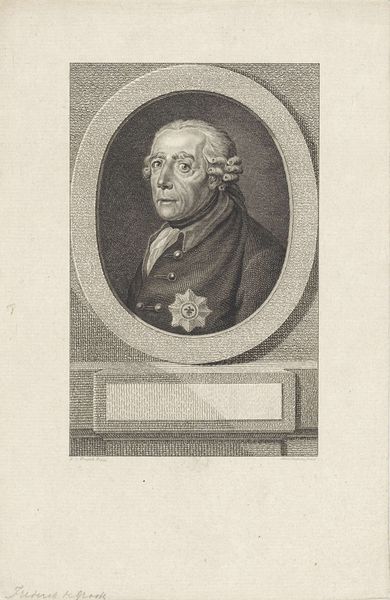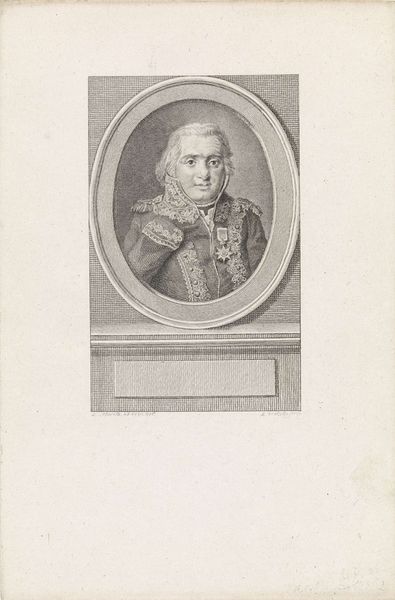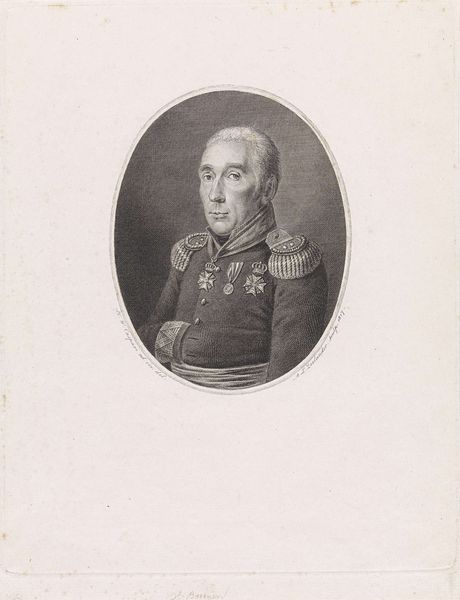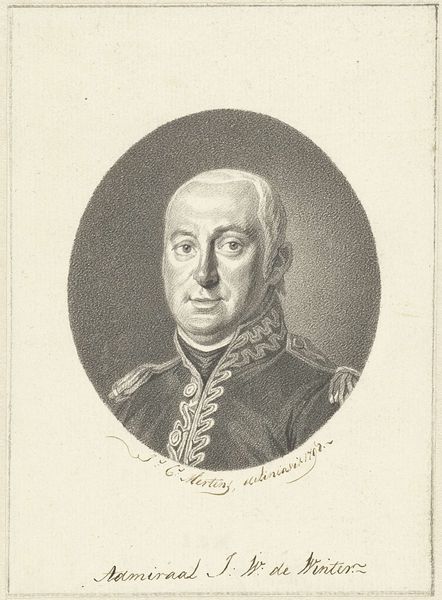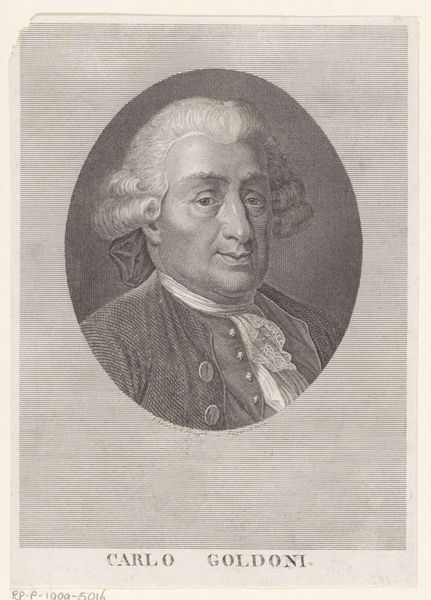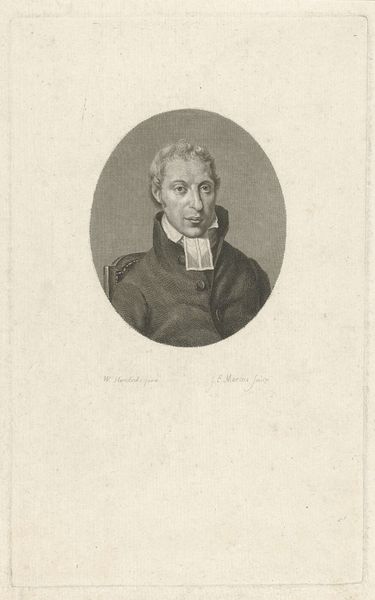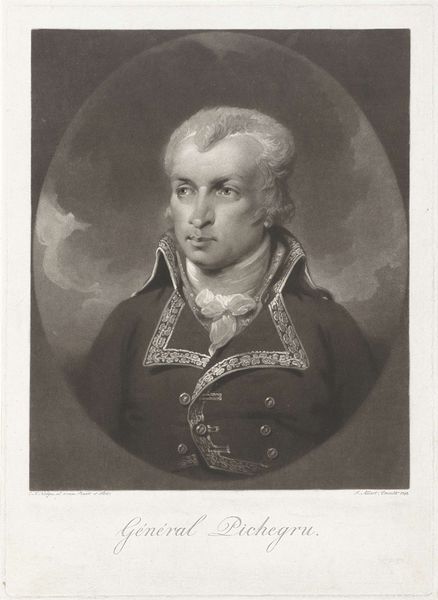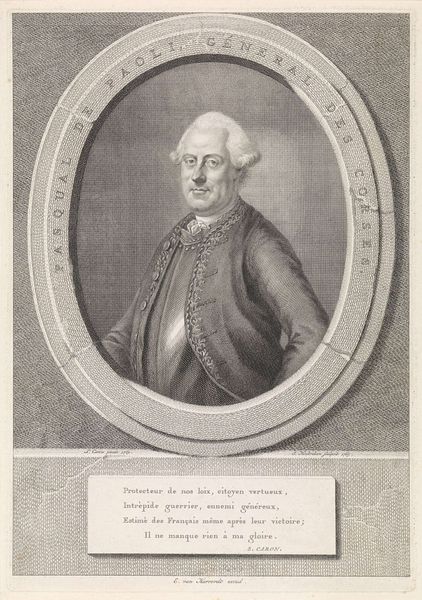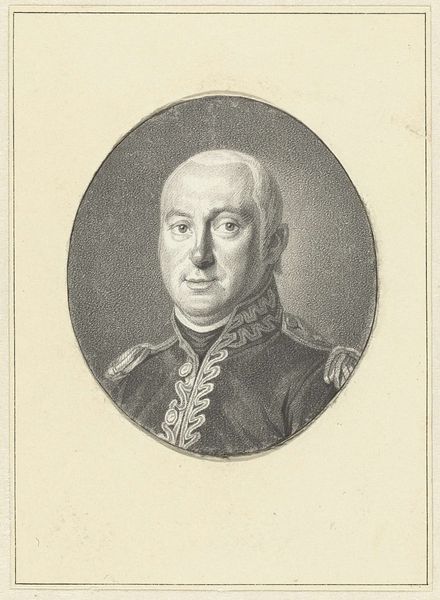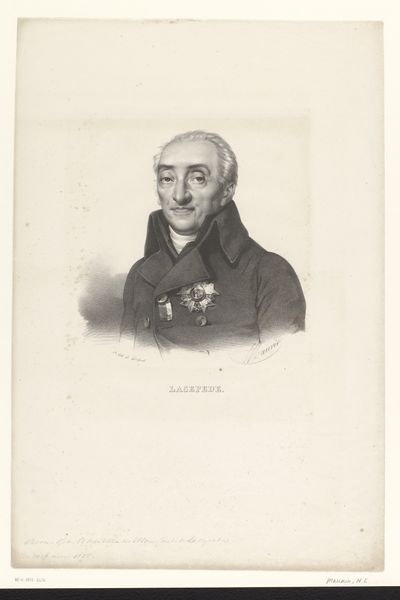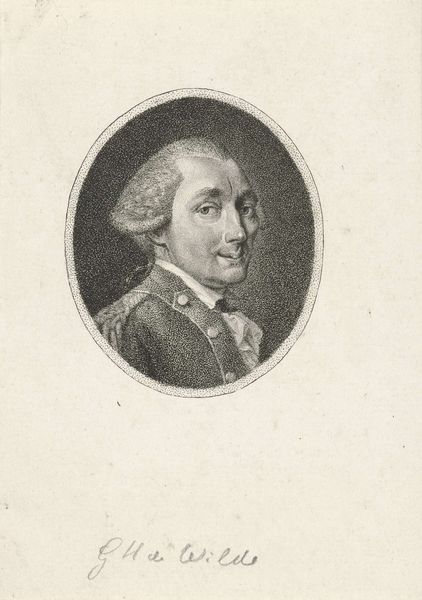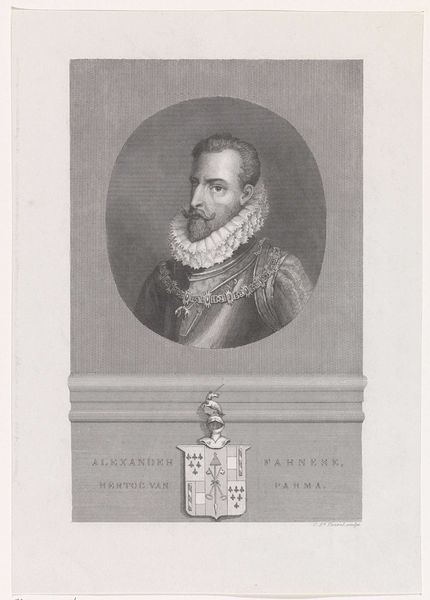
print, graphite, engraving
#
portrait
#
neoclacissism
# print
#
old engraving style
#
graphite
#
graphite
#
engraving
Dimensions: height 249 mm, width 166 mm
Copyright: Rijks Museum: Open Domain
Curator: What an imposing presence. It exudes such confidence despite being rendered with relatively modest materials. Editor: Indeed. This print, "Portret van Jean Victor Marie Moreau," attributed to Reinier Vinkeles, dating somewhere between 1786 and 1809, offers a fascinating glimpse into the visualization of power in that era. You see it employing graphite and engraving techniques on paper. The neoclassical style certainly emphasizes the subject’s... self-importance. Curator: The precision is remarkable, isn't it? Observe the gradations of tone achieved solely through line work. The stippling around his face gives such texture! Even though it’s just a print, there is depth. And notice the framing - almost a cameo-like effect, reinforcing ideas of idealization and classicism. Editor: That framing you speak of reflects perfectly the aspirations of the French Republic—specifically how they tied themselves to the perceived virtues of the Roman Republic in order to legitimize the Directorate. Moreau, the military and political figure, would’ve benefited directly from such strategic visual propaganda. It puts his ambitions directly within a historical context of greatness and military acumen. Curator: And the details of his uniform! The intricate embroidery speaks of his rank and status, but is deliberately restrained; never flashy, reflecting an image of stoicism appropriate for a Republican ideal of leadership. Even the relatively tight crop emphasizes those carefully tailored garments around the neck and shoulders—the true indicators of the kind of person they were dealing with. Editor: Absolutely. Consider this: engravings like these had a specific political role—to make Moreau and the virtues he embodies visually accessible across social strata. They were intentionally made replicable so his image could penetrate the popular consciousness. It speaks to the broader manipulation of symbols that happened around the French revolution. Curator: So much potent information conveyed through carefully considered form. Seeing it now reminds us about the role artistic skills and technologies played in shaping figures, revolutions, and opinions! Editor: Exactly. Analyzing the relationship between its artistic value and socio-historical impacts definitely amplifies our insight, providing layers to something one would otherwise gloss over as “just another portrait."
Comments
No comments
Be the first to comment and join the conversation on the ultimate creative platform.
